Demonic Is Trippy Sci-Fi Fun, and That’s About It
It's good for your film viewing needs, but isn’t going to shake your world. Demonic is trippy sci-fi fun, and that’s about it. And that's pretty cool.
Let’s just put it out there, we can be honest with each other. We’ve all found ourselves choosing films to watch less because the script is strong, and more because we were told it’s “aesthetic”. They say don’t judge a book by its cover, but the task becomes strenuous when it’s just so gosh darn pretty, and film is no exception. It’s not a one for one though; in the case of cinema, the text exists not to paint a picture for the audience, but for the crew. Therein, it’s natural to yearn for a certain visual pleasure when sitting down for a show.
That’s one element I’ve always loved of Shakespearian adaptations. At some point the film world agreed that any adaptations of The Bard must strive for a certain pedigree of beauty, which I’ll never object to because it feels so innate to the subject matter. Shakespeare’s work itself has always leaned into the romantic to the point that I don’t think anyone wouldn’t conjure angelic images while reading. And so, here’s a collection of the films I think captured William’s pathos the best. Both for the diversity they bring, and of course “the aesthetic.”
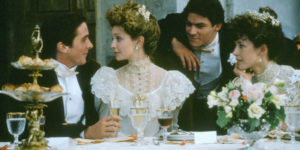
A strong start, not only because of the source material, but also the strength of the filmmakers. This adaptation does a perfect job of blending the essence of the original work with the film making trends of the late 90s. I think what makes it work most is the comedic but never flippant tone it takes with itself. It leans into the bizarre happenings of the story and frames them as bizarre. And this is further pushed by the whimsical tone of the visuals. It’s dreamy and flirty in the most enjoyable way.

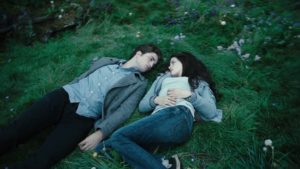
I know, I know. Some of you are seeing this choice and you’re raising your brows at me. But the writers themselves have quoted Shakespeare as a heavy inspiration, and it bleeds through the film. Not only in the obvious star-crossed lover element, but also the setting. A choice I noticed earlier on is the conscious play with values leading eyes to the couple. Whether we’re with our lovers in Italy or even a bed of flowers, something about the blocking feels so theatrical to me. And I mean that as in similar to watching actors on a stage. Seeing the way they lean into each other with each line and how scenes will melt into a long pause feels like it was taken straight from William’s playbook. Twilight at its core is a gothic modernization of Shakespeare, and it looks good while doing that.
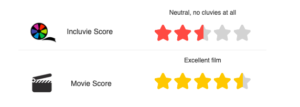
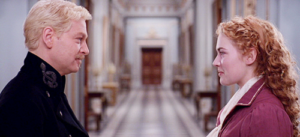
Two words: visual scale. It’s not surprising this film inspired The Lion King just given how grand everything is. Every scene is littered with tiny details and moving parts. After some time, the picture almost feels like watching a painting speed by. This never coincides with bad pacing though. Every movement feels purposeful, and the film knows when to pause for effect. I won’t spoil it here, but the scene with his father is somehow aweing and terrifying at the same time. This is a movie that understands visual gravity and how to use it well.
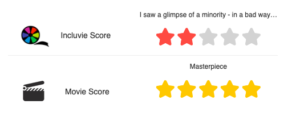
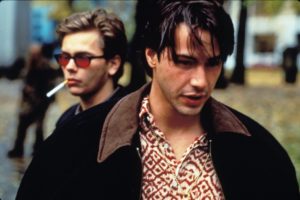
This film is weirdly trippy. It sticks to the story pretty closely, even at many times taking exact words from Henry IV, but still feels extremely removed, making it one of the lesser known Shakespeare films. It’s one of the slower moving movies, playing a lot with when and how things are moving constantly. But it makes sense because these shifts are alongside where our characters and their relationships are. And the look of the movie almost works as a guide to help the audience keep with the tempo. Visually it’s playful but honest. It’s natural but hazy. It is for sure in love with the homoerotic male form, and really given the two leads, none of us can blame it!

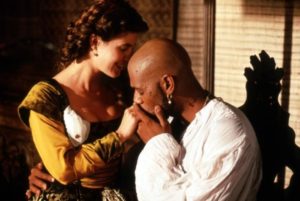
Of all the sexy films trying to capture the Sweet Swan of Avon, this is definitely one of the hottest. Lots of scenes take place in candlelight where only a few parts of the actors are exposed. And this push and pull of the flames continues throughout. A huge element of the film becomes what is seen and by who, which aligns greatly with the original text. There’s also the stellar costuming, which does an amazing job of having the entire cast be the perfect levels of modern, sensual, and licentious. If you’re looking to get hot under the collar, this one should be first on your list of all Shakespeare films.


Leaning in the opposite direction, this movie almost feels crude to discuss. The true beauty of the picture comes in the pain of its director. The film was produced after the murder of Polanski’s wife, and it shows. The film is crawling with grotesque imagery of characters going through brutal pain. In many cases, the camera is literally turning the corner into these intense scenes. But the horror is so meticulously done that it pays off. You find yourself engrossed by the imagery, and the weight of Macbeth is raised by the filmmaking. It’s a more difficult watch, but it is so much for the betterment of the film.
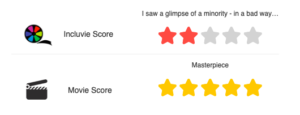

Now Romeo + Juliet just wins for how great it is as an adaption alone. Baz Luhrmann reading the classic as a high paced gang war is genius, and it makes the movie so much fun. But also, crazy enjoyable to look at. Similar to an action film, a lot of things are highly saturated to communicate the intensity of this world. But the romantic softness is captured in there as well, just ever so slightly. With an aquarium, a pool, some flowers, or in some case Romeo and Juliet themselves. The movie’s visuals tell us that this world will devour the young and the innocent, and it is doing so by visually choking them. It’s rare that artistic cinema can find that perfect blend of visual stimulation and being fun as hell, but they did it here. They did crazy well here!
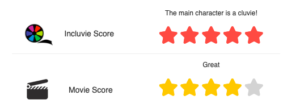
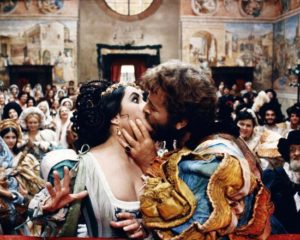
This picture aims to combine the opulent with the comedic, and it does so fantastically. Most scenes fall under Elizabeth Taylor being poised and Elizabeth Taylor being manic. The comedy comes from the juxtaposition of the visuals being so stunning. Like the Shakespeare films, there’s a clear choice to use lighting to make the sets and actors look more angelic. But whenever we find Katharina having a tantrum, the lighting choices literally spotlight the absurdity of the situation. The movie’s imagery does a strong job at pulling forth the comedy while also having its cast hold a level of regal ethos needed for the story.
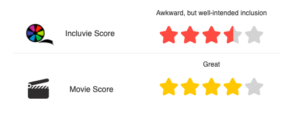

This is another comedy, but unlike other Shakespeare films, Henry V takes a different approach. You’ll immediately notice the washed out look of the film. It’s almost like an oil painting in how it blends its oranges, greens, and light blues. But rather than coming off as funny, it’s more calming. It’s showing the audience that these scenes, and really this film, are not going for heightened severity. Rather, it’s a fun flick you can turn on and chill while enjoying the ride. It’s not a common approach to Shakespeare’s writings, but the filmmakers make good use of it, and it does exactly what was intended.

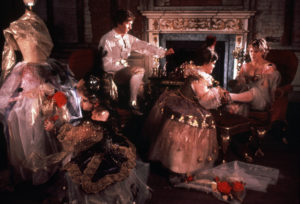
Coming from Derek Jarman, you know this movie is going to be otherworldly. And that it is. Finding a weird combination of detached and intimate, this movie plays with so many scenes where characters are tiny within their own world. The atmosphere is tense and removed. So much of what is seen has a thick air of creepiness to it. But it’s engaging. It’s like watching a scary movie that you refuse to look away from. It’s haunting, and a lot of the scenes have stuck in my head. But the weirdest part is, I kinda really want to see it again!
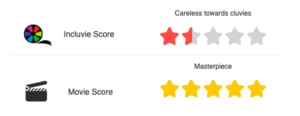
As I said prior, the art to good Shakespeare films is to understand your look. Is it gorgeously morbid or angelically calm, beautifully gritty or naturally hazy? Once you’ve decided that, the end results are infinite, all of which stunning. (One last honorable mention goes out to West Side Story.)
Related lists created by the same author
It's good for your film viewing needs, but isn’t going to shake your world. Demonic is trippy sci-fi fun, and that’s about it. And that's pretty cool.
Related diversity category
The tale of two friends spans three films and gives wonderful representation for young girls everywhere.